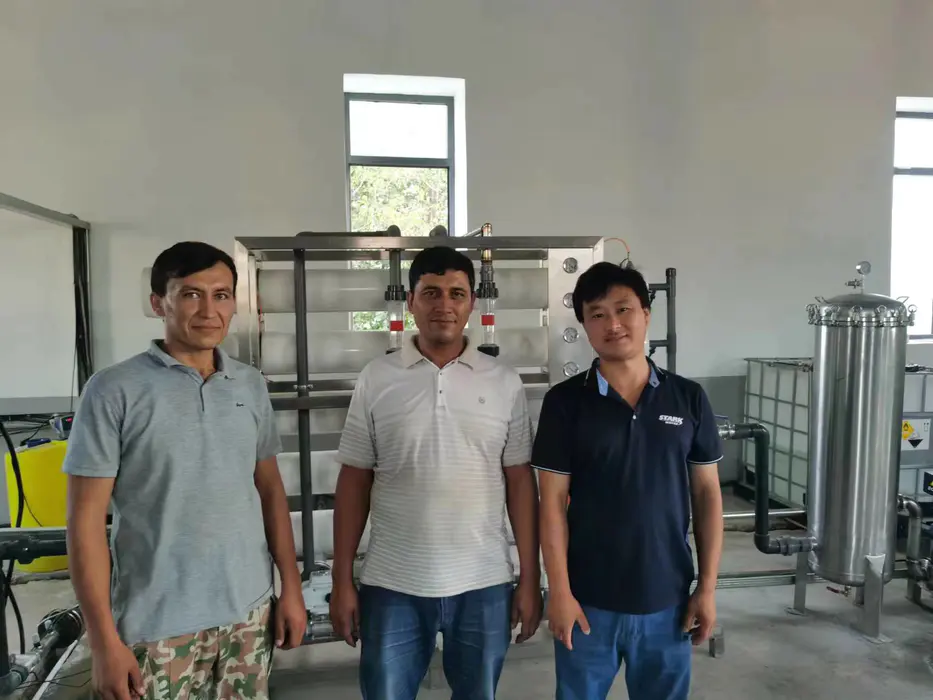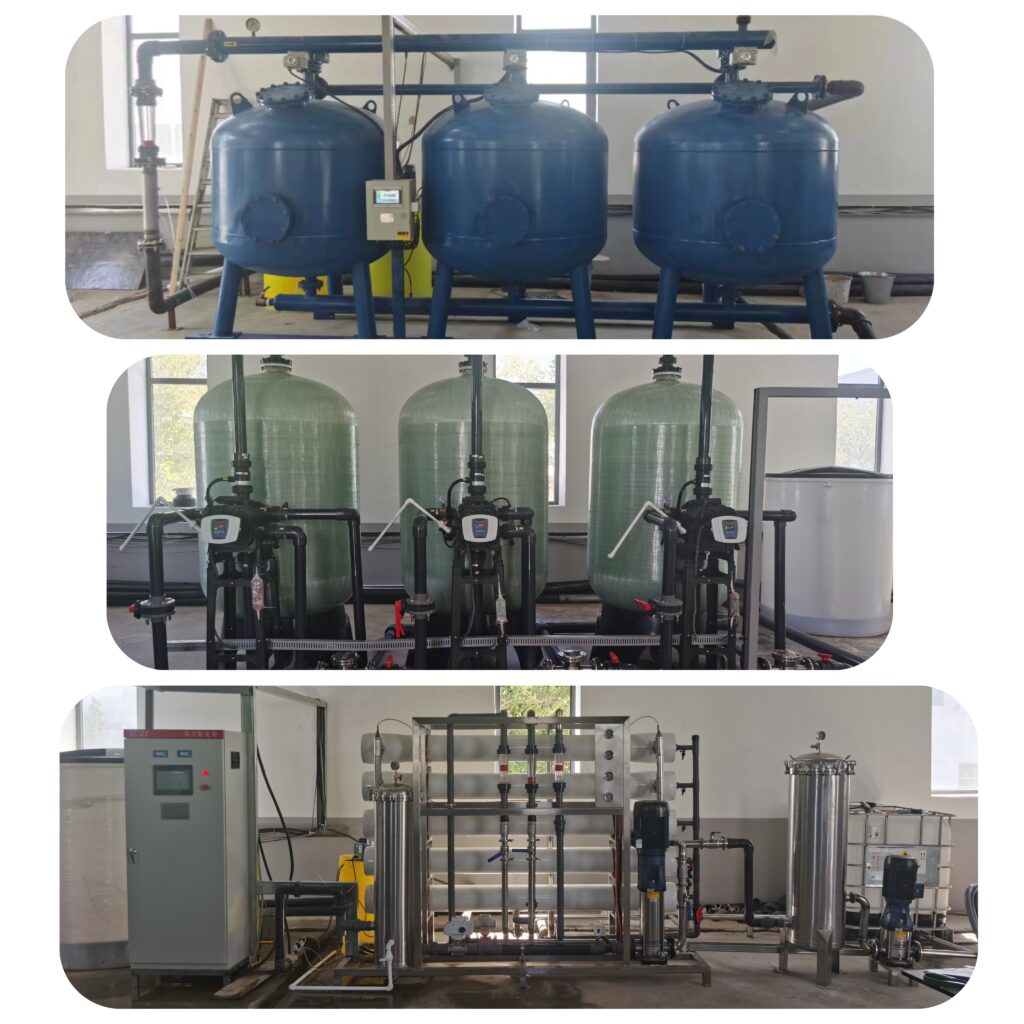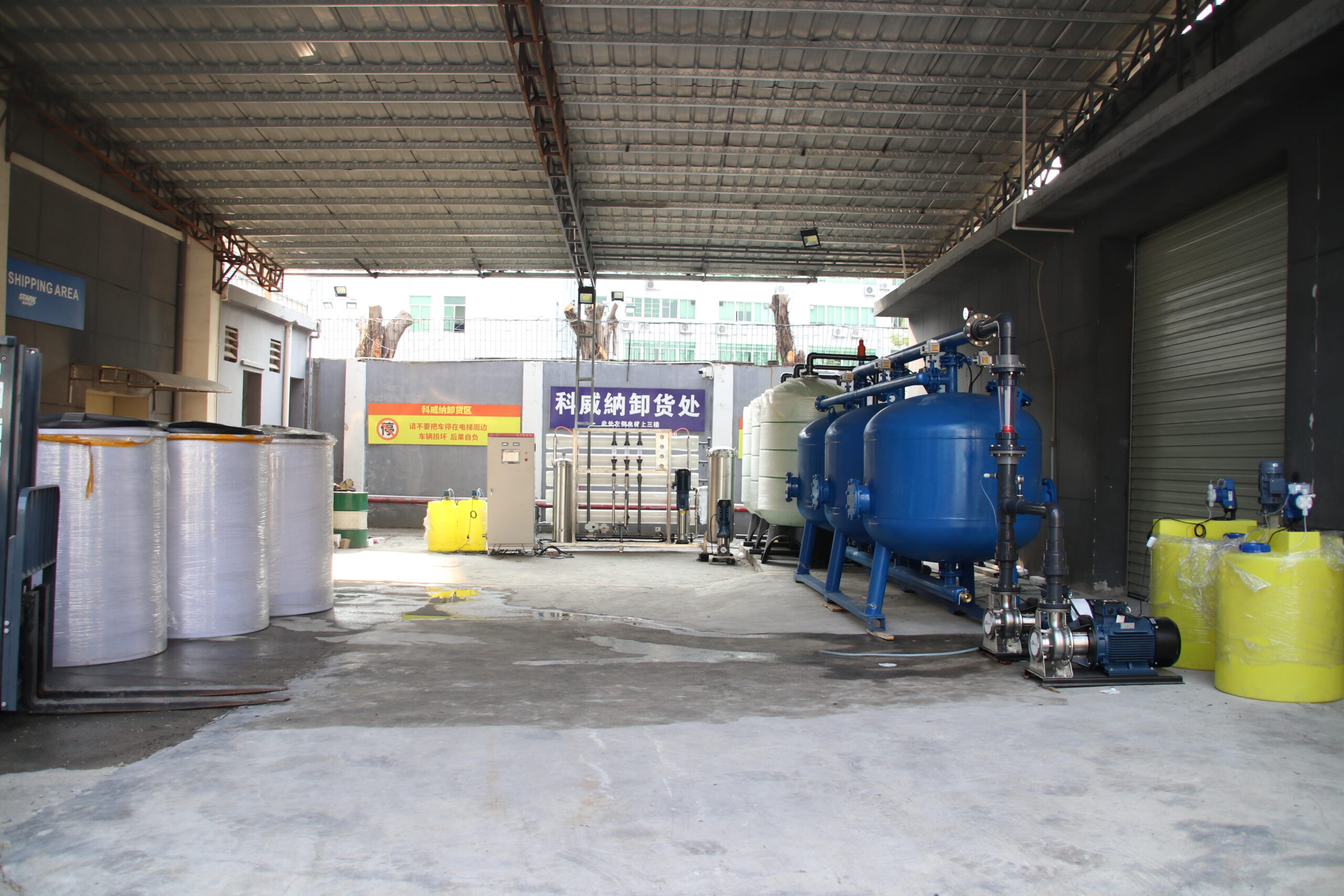
water reuse system

1. Wastewater Collection: The wastewater generated by the printing and dyeing factory is first collected. This wastewater may contain various dyes, chemicals and other pollutants.
2. Preliminary treatment: The collected wastewater undergoes preliminary treatment, which may include steps such as filtration, sedimentation or pH adjustment to remove some solid particles and most suspended solids.
3. Biological treatment: The wastewater then enters a biochemical treatment unit, such as activated sludge method, biological filter or constructed wetland. These treatment methods purify water quality by degrading organic matter by microorganisms.
4. Advanced treatment: Biochemically treated water may need to undergo further advanced treatment to remove more organic matter, heavy metals or other harmful substances, which may include adsorption, ion exchange, advanced oxidation and other technologies.
5. Purification treatment: The water quality after deep treatment is closer to clean water, but it may still contain trace amounts of pollutants. In the purification treatment stage, technologies such as filtration, reverse osmosis, and ultrafiltration are often used to further purify water quality.
6. Disinfection: In order to ensure that the recycled water is safe and harmless, it is often necessary to disinfect the purified water to kill bacteria and other microorganisms. Commonly used disinfection methods include chlorination, ultraviolet radiation, ozone treatment, etc.
7. Water Quality Monitoring: During the entire treatment process, water quality needs to be monitored regularly to ensure that the treatment effect complies with relevant discharge standards and reuse requirements.
8. Storage and Distribution: The treated water can be stored for subsequent production use. When needed, water can be distributed to the required production links through pipelines or pumping stations.
9. Recycling: The treated water can be used in the production process of the printing and dyeing factory, such as washing, rinsing, diluting dyes, etc., thereby realizing the recycling of water resources.
Through these steps, printing and dyeing factories can achieve effective use of water resources, reduce environmental pollution, and reduce production costs.


